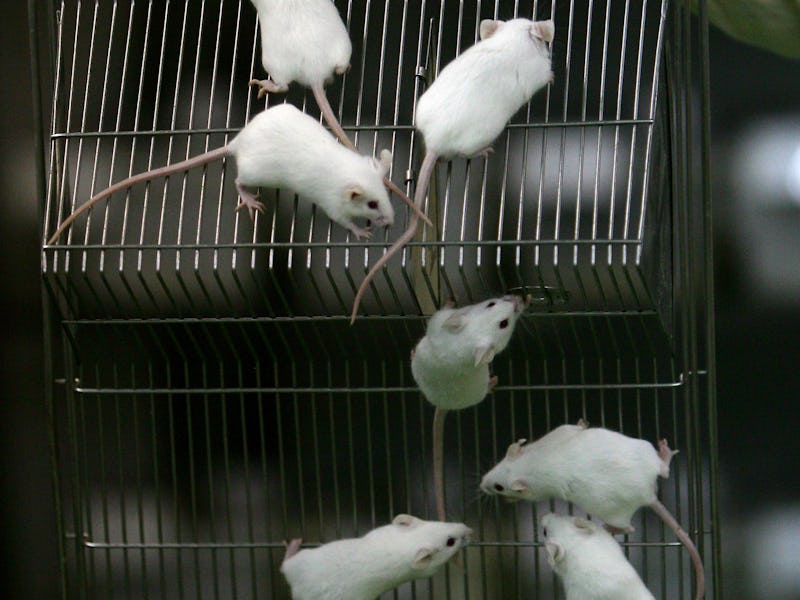Neuroscientists Can Control When a Mouse Dreams
The rodents enter REM seconds after neurons in the medulla are activated.

No one knows for certain why we dream. It’s theorized that dreaming likely serves an evolutionary purpose — a neural training ground to encounter potential threats, over and over again. Humans over average spend about two hours each night dreaming and it almost always happens during a REM cycle, a period that researchers think boosts our creativity and memory. But a bulletproof reason — why it’s necessary dream of yourself in your underpants in front of a crowd, for instance — has remained elusive.
But new research may soon lead to an answer to that very often Googled question.
Neuroscientists from the University of California, Berkeley have identified the neurons within the medulla that control all aspects of REM sleep. With the activation of an optogenetic switch inserted within these nerve cells, researchers can now control when a sleeping mouse begins to dream.
In 94 percent of recorded trials, mice entered REM sleep within seconds of the activation of their brain’s neurons via a laser light. Researchers hope this new ability to control when the mice stop and start dreaming will finally allow scientists to learn why we dream. This discovery also poses an opportunity to study neurological diseases like Parkinson’s and Alzheimer’s, which affect sleep.
“Many psychiatric disorders, especially mood disorders, are correlated with changes in REM sleep, and some widely used drugs affect REM sleep, so it seems to be a sensitive indicator of mental and emotional health,” said Franz Weber, an author of the paper recently published in Nature, to UC Berkeley News.
Whether or not mice dream of cheese has yet to be determined.